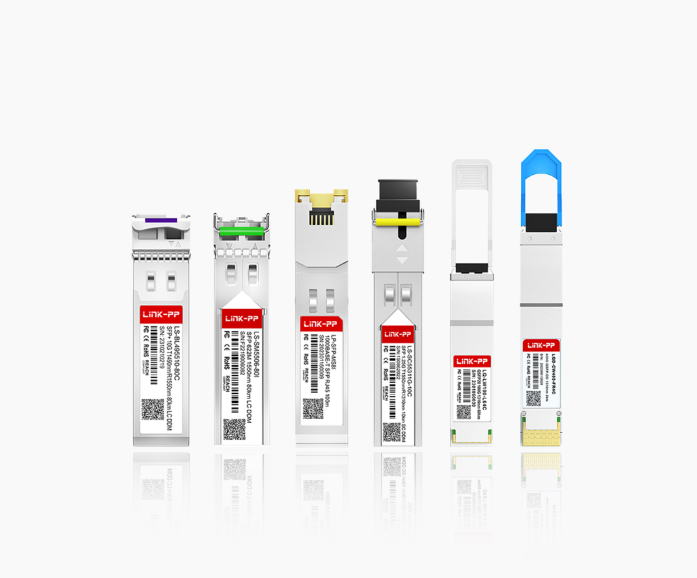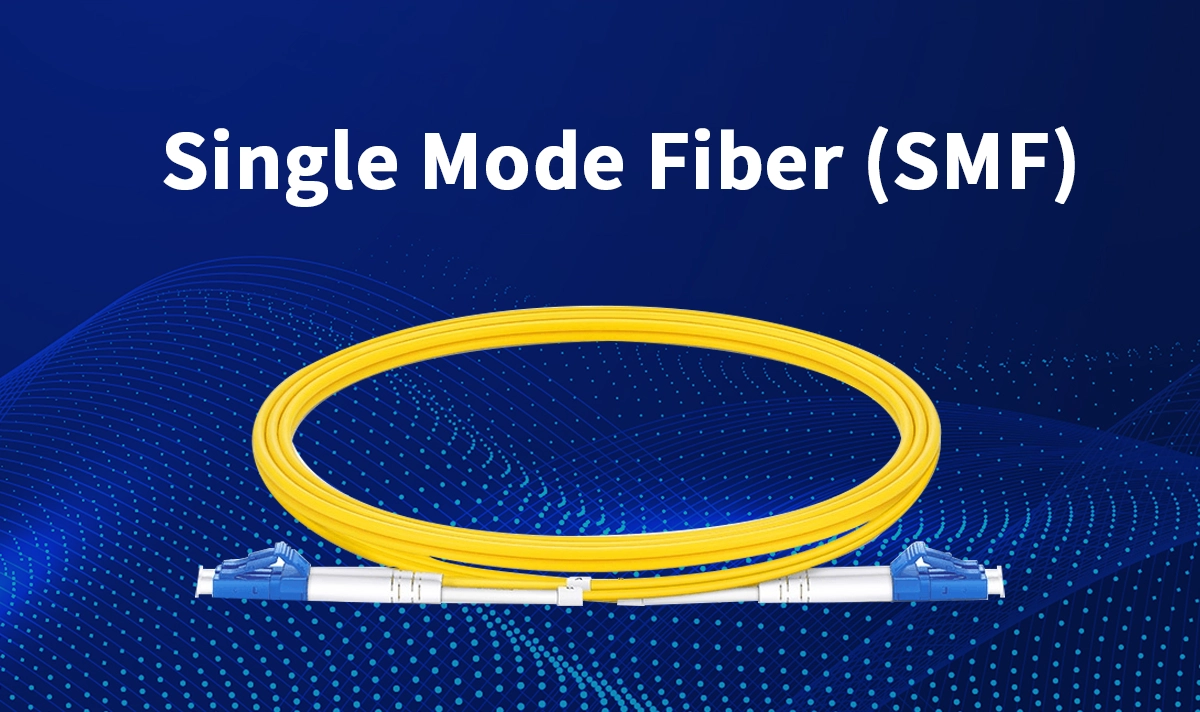
Single mode fiber is a kind of fiber optic cable. It has a very small core, about 9μm wide. This small core lets only one light path go through. This helps lower signal loss. It also keeps data clear over long distances. Single mode fiber can carry more data than multimode fiber. Multimode fiber has a bigger core and carries many light paths. It works best for short distances. Many networks use single mode fiber for fast communication. It also gives strong connections across cities or countries. Let's delve into the fascinating world of single mode fiber in the article now.
➤ Key Takeaways
Single mode fiber has a tiny core. It lets only one light path go through. This helps stop signal loss. It keeps data clear over long distances.
It can handle a lot of data. It can send data up to 160 kilometers or more. This makes it great for fast networks in cities and countries.
Single mode fiber works better than multimode fiber for long distances. But it costs more and needs careful setup.
Single mode fiber works best with light at 1310nm and 1550nm. These wavelengths have the least signal loss.
Many people use it in telecommunications, data centers, and long-haul networks. It gives fast, reliable, and future-ready connections.
➤ What Is Single-Mode Fiber
Single-mode fibers are a special kind of fiber optic cable. They are made to send data fast and far. The core is very small, about 9μm wide. The cladding around the core is 125μm wide. The small core lets only one light path move through. This is called single-mode guidance.

Some main features of single-mode fibers are:
Core diameter: 9 micrometers (μm)
Cladding diameter: 125 micrometers (μm)
Only the main transverse mode of light goes through
Step-index refractive profile, with a sharp change between core and cladding
V-number is 2.405 or less for step-index fibers
These things make single-mode fibers different from multimode fibers. Multimode fibers have bigger cores and let many light paths go through. The small core and step-index profile help single-mode guidance. This makes these fibers great for sending lots of data far.
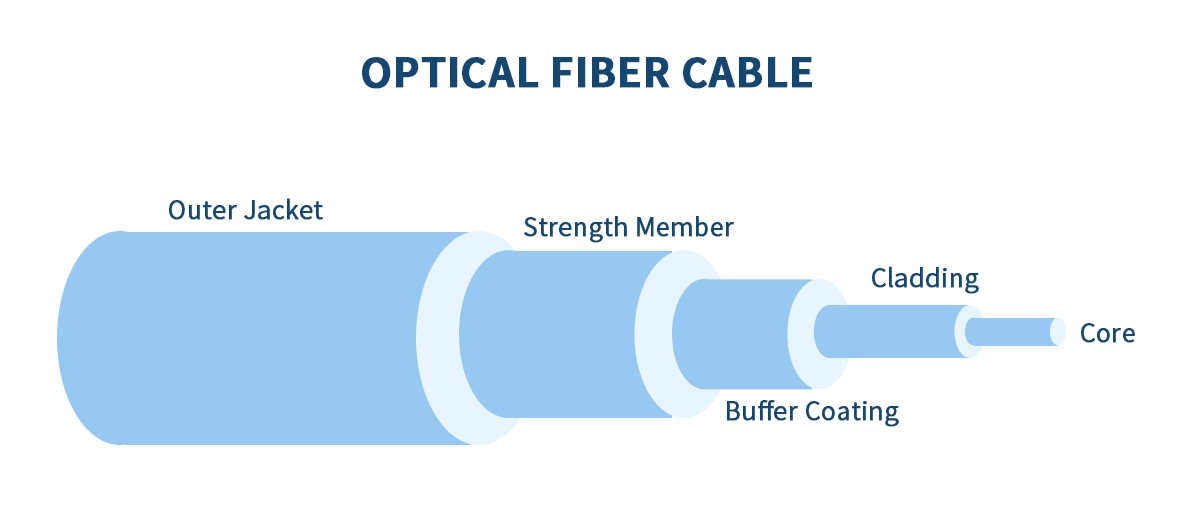
A single-mode optical fiber has a few main parts:
The core carries the light signals.
The cladding wraps around the core and keeps the light inside.
The buffer coating protects the fiber from getting hurt.
The strength member, often strong yarn, gives support.
The outer jacket keeps out water, sunlight, and bumps.
This design helps single-mode fibers send data far with little signal loss or change.
OS1 and OS2 Types
Single-mode optical fiber comes in two main types: OS1 and OS2. The table below shows how they are different:
Feature | OS1 Fiber | OS2 Fiber |
|---|---|---|
Standard Compliance | ITU-T G.652.A/B | ITU-T G.652.C/D |
Structure | Tight-buffered | Loose-tube |
Attenuation (1310nm) | Up to 0.5dB/km | Up to 0.4dB/km |
Attenuation (1550nm) | Up to 0.4dB/km | Up to 0.3dB/km |
Wavelength Range | O, C bands | O, E, S, C bands |
Max Distance | Up to 10km | Up to 200km |
Speed Capability | 1 to 10GbE | Up to 40G/100GbE |
OS1 fibers are used inside buildings or on campuses.
OS2 fibers are better for outside, long distances, and fast networks.
➤ Key Advantages of Single Mode Fiber Optic Cable
Exceptional Bandwidth and Data Rates: With modal dispersion removed, single mode fiber optic cable supports virtually limitless bandwidth potential. It forms the foundation for terabits-per-second data transmission over a single strand, easily handling 100G, 400G, 800G, and emerging 1.6T standards.
Very Long Transmission Distances: SMF exhibits significantly lower signal attenuation (loss) compared to MMF, especially at the crucial 1310nm and 1550nm wavelengths. Combined with the absence of modal dispersion, this allows signals to travel hundreds of kilometers without needing regeneration. Distances of 80km, 100km, and far beyond are routine.
Future-Proof Infrastructure: Investing in single mode fiber optic cable is an investment in longevity. Its inherent bandwidth capacity far exceeds current needs and readily accommodates future speed upgrades simply by changing the optical transceiver modules at each end, without replacing the fiber plant itself.
Lower Latency: The direct path of light minimizes propagation delay differences, contributing to the ultra-low latency essential for financial trading, real-time collaboration, and 5G applications.
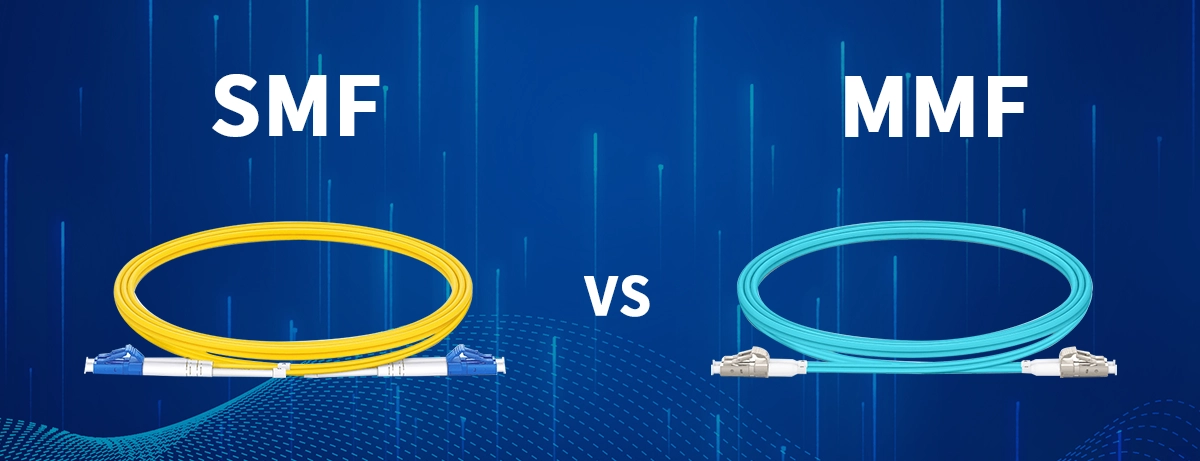
➤ Single Mode Fiber vs. Multimode Fiber: A Clear Comparison
Feature | Single Mode Fiber (SMF) | Multimode Fiber (MMF) |
|---|---|---|
Core Diameter | 9µm | 50µm or 62.5µm |
Light Source | Laser Diode (1310nm, 1550nm) | LED or VCSEL (850nm, sometimes 1310nm) |
Light Paths (Modes) | Single Mode | Multiple Modes (Hundreds) |
Primary Limitation | Chromatic Dispersion, Attenuation | Modal Dispersion |
Maximum Bandwidth | Extremely High (Virtually Unlimited) | Limited (Significantly Lower than SMF) |
Typical Distance | 10km, 40km, 80km, 100km+ | Up to 550m (OM5/OM4 @ 100G), usually less |
Cost | Lower Fiber Cost, Higher Optical Transceiver Cost | Higher Fiber Cost, Lower Optical Transceiver Cost |
Best For | Long-distance fiber optic communication, Metro/Core Networks, Data Center Interconnect (DCI), ISPs, Telecom, High-Speed Backbones | Short Distances (Data Centers, Buildings, Campus), Cost-sensitive LANs |
➤ Where is Single Mode Fiber Used? Applications Galore
The unique properties of single mode fiber optic cable make it indispensable for numerous critical applications:
Telecom & Internet Backbones: The core infrastructure of global internet and telephone networks relies entirely on SMF for long-haul and metropolitan networks.
Internet Service Providers (ISPs): Delivering high-speed FTTH (Fiber-to-the-Home) and FTTB (Fiber-to-the-Building) services, especially for gigabit and multi-gigabit tiers.
Data Center Interconnect (DCI): Connecting geographically separated data centers over tens or hundreds of kilometers with high bandwidth and reliability.
Cable Television (CATV) Networks: Distributing broadcast signals over long distances within cable operator infrastructures.
5G Mobile Networks: Connecting cell towers (fronthaul, midhaul, backhaul) to the core network, demanding high capacity and low latency.
Industrial & Enterprise Networks: For long cable runs between buildings or across large campuses where MMF distances are insufficient.
High-Performance Computing (HPC) Clusters: Where ultra-low latency and massive bandwidth between nodes are paramount.
➤ Unlocking SMF Performance: The Role of Optical Transceivers
Single mode fiber optic cable itself is a passive medium. To send and receive data, you need active components: optical transceivers. These modules convert electrical signals from network switches/routers into optical signals for the fiber, and vice versa. Compatibility is crucial.
Transceiver Types: Common optical transceiver form factors used with SMF include SFP, SFP+, QSFP+, QSFP28, QSFP-DD, and OSFP, supporting speeds from 1G up to 800G and beyond.
Wavelength Matters: SMF optical transceivers primarily use 1310nm or 1550nm wavelengths. 1550nm experiences lower attenuation, enabling the longest distances. DWDM (Dense Wavelength Division Multiplexing) transceivers use tightly spaced 1550nm wavelengths to multiply capacity on a single fiber pair.
Distance Specifications: Transceivers are classified by their reach: SR (Short Reach), LR (Long Reach - 10km), ER (Extended Reach - 40km), ZR (80km+). Always match the transceiver's distance rating to your SMF link length.
LINK-PP: Your Partner for High-Performance Optical Connectivity Choosing reliable, compatible optical transceivers is essential for maximizing your single mode fiber optic cable investment. LINK-PP offers a comprehensive range of MSA-compliant transceivers designed for optimal performance and value in SMF environments.
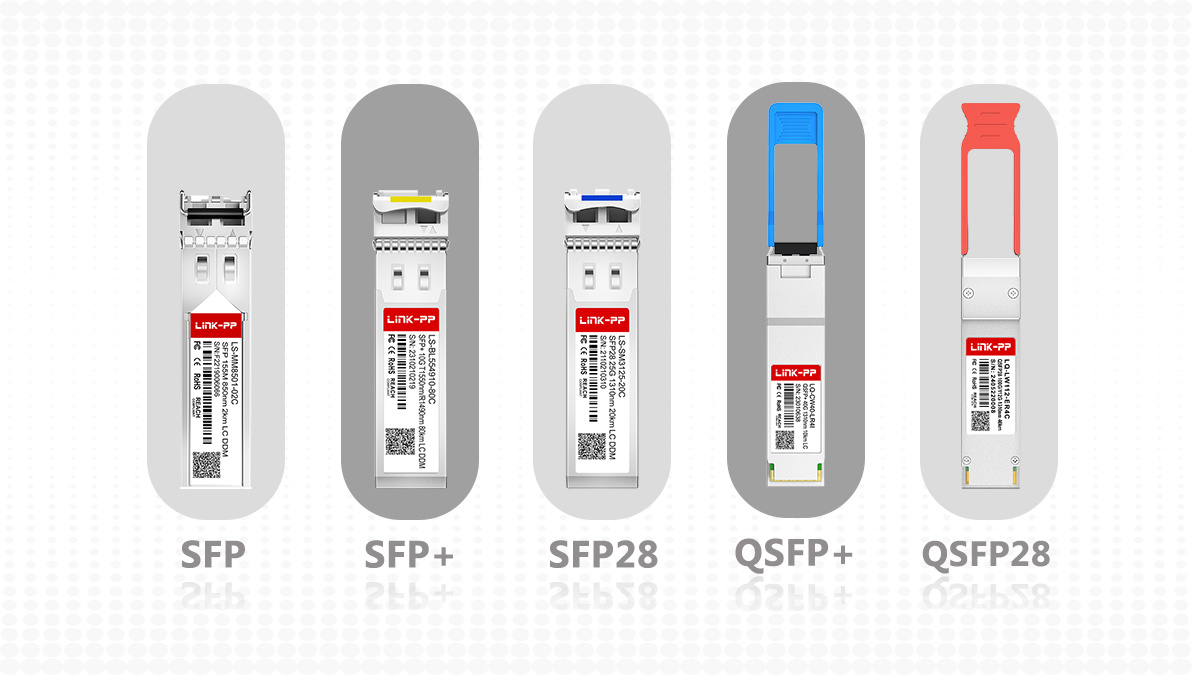
LINK-PP Recommended Transceivers for Single Mode Fiber Applications
Application Speed | Common Form Factor | LINK-PP Model Example | Typical SMF Distance | Wavelength | Key Use Case |
|---|---|---|---|---|---|
1 Gigabit | SFP | 10km | 1310nm | Enterprise Uplinks, Medium Distance Links | |
10 Gigabit | SFP+ | 10km | 1310nm | Common Data Center/Enterprise 10G Links | |
10 Gigabit (Long) | SFP+ | 40km | 1550nm | Extended Reach Data Center Interconnect | |
25 Gigabit | SFP28 | 10km | 1310nm | 5G Fronthaul, High-Speed Server Links | |
40 Gigabit | QSFP+ | 10km | 1310nm (4 lanes) | Aggregation, Core Switching | |
100 Gigabit | QSFP28 | 10km | 1310nm (4 lanes) | High-Density Data Center Spine/Leaf, DCI | |
100 Gigabit (Long) | QSFP28 | 40km | 1310nm (4 lanes) | Long-Haul Data Center Interconnect Links | |
400 Gigabit | QSFP-DD | 2km | 1310nm (4 lanes) | Next-Gen Data Center High-Speed Interconnect |
➤ Ensuring Optimal Single Mode Fiber Performance
Deploying SMF successfully requires attention to detail:
Proper Installation & Handling: SMF cores are tiny. Precise cleaving, splicing (fusion preferred), and connector termination (like APC/PC) are critical to minimize loss and back reflection. Avoid tight bends beyond the fiber's minimum bend radius.
Component Compatibility: Ensure connectors (LC, SC are common), patch panels, and especially optical transceivers are specifically designed for use with single mode fiber optic cable.
Testing & Certification: Use Optical Time Domain Reflectometers (OTDRs) and light source/power meters (LSPMs) to certify fiber links for attenuation and ensure they meet design specifications before deployment.
Choosing the Right Partner: Work with reputable suppliers for both fiber cabling and optical transceivers to guarantee quality, performance, and longevity.
➤ Conclusion: The Undisputed Champion for Distance and Speed
Single mode fiber optic cable is not just another cable; it's the fundamental enabler of the high-speed, global connected world we rely on. Its ability to transmit massive amounts of data over extraordinary distances with minimal signal degradation makes it the undisputed choice for backbone networks, service provider infrastructure, long-distance interconnects, and increasingly, access networks demanding gigabit+ speeds. While the initial optical transceiver cost may be higher than for multimode, the unparalleled performance, limitless scalability, and future-proof nature of SMF deliver unmatched long-term value.
Ready to harness the power of single mode fiber for your network?
Explore the full range of high-performance, compatible LINK-PP optical transceivers designed specifically for reliable single mode fiber optic cable deployments. Whether you need cost-effective 10G solutions or cutting-edge 400G/800G technology for your data center interconnect or long-distance fiber optic communication project, LINK-PP has the expertise and products to ensure your success.
➤ See Also
OM1 OM2 OM3 OM4 OM5 Multimode Fibers Explained
The Importance Of Digital Diagnostics In Optical Transceiver Performance




